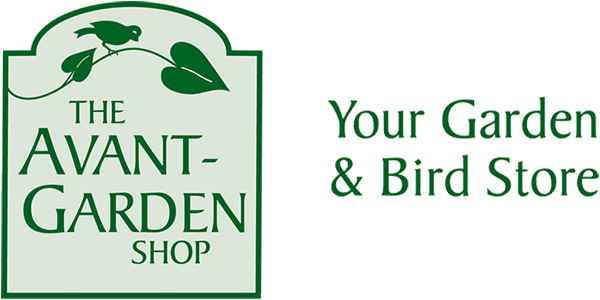CHEX air date: Sept. 19th, 2014 To watch this episode, click link here. Years ago it use to be very difficult for apartment dwellers to find a spot to create a little garden plot! ?But thanks to years of hard work and lots of great volunteers, there are numerous places where you can plant a few seeds. Jillian Bishop of the Community gardening network is the woman you need to contact if you’d like to find out more! I recently visited with Jillian at one of these gardens located near the Liftlocks! ?It’s great to see this land producing food. ?When they started the garden a few years ago they were thrilled to find the BEST soil. Over the years waterways staff had pulled loads and loads of weeds out of the water which decomposed where the garden plots are now located creating wonderful rich soil! While I was there, we decided to try out some weeding tools that we?carry at The Avant-Garden Shop. ?We’ve been selling them since the day the store opened. We have sold 1000’s. They’ve been featured in Fine Gardening magazine and are a BIG hit. ?The Garden Bandit and the Telescoping weeders make weeding so easy. They are simple looking tools. But sometimes simple is better! ?Jillian was even able to weed her garden in her heels and dress! ?Check it out on an upcoming episode of The Garden Gate (Sept. 19th, 2014). The Garden Gate appears bi-weekly on The New CHEX Daily between 5 and 6pm on CHEX-TV.
Gardening
Garden Gate: Episode 44 – Griffins Greenhouses
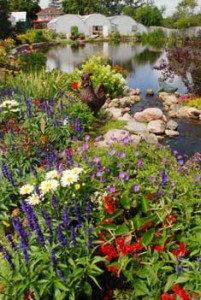 CHEX TV air date: August 22nd, 2014 Click here to watch this episode online. At this time of year, it’s wonderful to visit a garden centre like Griffins. ?Their plants look wonderful (and there are still plenty), the pond out back is so relaxing and there is always someone around who can answer your questions or just spend a few minutes chatting. Griffins Greenhouses are ?members of Peterborough and Area Garden Route (www.gardenroute.ca). I will chat with them about their involvement with this group and also about some of their beautiful hanging baskets and containers. ?They’ll have some tips on keeping them good looking through the heat of our summer.
CHEX TV air date: August 22nd, 2014 Click here to watch this episode online. At this time of year, it’s wonderful to visit a garden centre like Griffins. ?Their plants look wonderful (and there are still plenty), the pond out back is so relaxing and there is always someone around who can answer your questions or just spend a few minutes chatting. Griffins Greenhouses are ?members of Peterborough and Area Garden Route (www.gardenroute.ca). I will chat with them about their involvement with this group and also about some of their beautiful hanging baskets and containers. ?They’ll have some tips on keeping them good looking through the heat of our summer.
Garden Gate: Episode 43 – Trellises
 CHEX TV Airdate: August 8th, 2014 Click link to watch this episode. We have a variety of trellises available at The Avant-Garden Shop. ?Besides being beautiful, these are Canadian made and add interest and provoke conversation in your garden. I brought?a few trellises to a local garden centre and picked out a few plants that would work well with them! When buying a trellis, you want to make sure they are large enough (plants seem to grow bigger than we expect!) and also durable. ?Often times we set up a trellis and find out a year later that it’s rusted, falling apart…and now covered with a plant that is dragging it down to the ground. ?How do you untangle that mess?! In this episode, I’ll give you a few ideas on what to look for in a quality trellis and different ways to display them in your garden. ?
CHEX TV Airdate: August 8th, 2014 Click link to watch this episode. We have a variety of trellises available at The Avant-Garden Shop. ?Besides being beautiful, these are Canadian made and add interest and provoke conversation in your garden. I brought?a few trellises to a local garden centre and picked out a few plants that would work well with them! When buying a trellis, you want to make sure they are large enough (plants seem to grow bigger than we expect!) and also durable. ?Often times we set up a trellis and find out a year later that it’s rusted, falling apart…and now covered with a plant that is dragging it down to the ground. ?How do you untangle that mess?! In this episode, I’ll give you a few ideas on what to look for in a quality trellis and different ways to display them in your garden. ?
Garden Gate: Episode 41 – A visit to The Greenhouse on the River
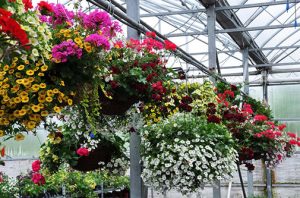 CHEX TV airdate: Friday July 11th, 2014 Click here to watch this episode. I had the pleasure of visiting Greenhouse on the River to shoot two episodes of The Garden Gate. Peter Green, owner, was my guest for this episode and we talked about their beautiful containers and unique annuals. The Greenhouse on the River is a member of Peterborough and Area Garden Route. ?This is a cooperative of 9 garden related businesses in the area that each specialize in one or two areas of gardening. ?The Greenhouse is well known for their beautiful container gardens. Whether it be hanging baskets, stunning large containers or small succulent gardens, The Greenhouse on the River is the place to go.
CHEX TV airdate: Friday July 11th, 2014 Click here to watch this episode. I had the pleasure of visiting Greenhouse on the River to shoot two episodes of The Garden Gate. Peter Green, owner, was my guest for this episode and we talked about their beautiful containers and unique annuals. The Greenhouse on the River is a member of Peterborough and Area Garden Route. ?This is a cooperative of 9 garden related businesses in the area that each specialize in one or two areas of gardening. ?The Greenhouse is well known for their beautiful container gardens. Whether it be hanging baskets, stunning large containers or small succulent gardens, The Greenhouse on the River is the place to go. ![DSC_0586[1]](https://www.avantgardenshop.com/wp-content/uploads/2014/07/DSC_05861-300x201.jpg) Peter and Elyn as well as their staff are very knowledgeable in what plants will do well in your specific situation. And they are there to help you choose which you rarely find at box stores! I loaded my car this spring with beautiful plants and they have been doing tremendously. The fan flower (photo) is spectacular! In July they being their summer sale. So if you need to fill in a few holes, now is the time to visit. Tell them Brenda sent you! Enjoy
Peter and Elyn as well as their staff are very knowledgeable in what plants will do well in your specific situation. And they are there to help you choose which you rarely find at box stores! I loaded my car this spring with beautiful plants and they have been doing tremendously. The fan flower (photo) is spectacular! In July they being their summer sale. So if you need to fill in a few holes, now is the time to visit. Tell them Brenda sent you! Enjoy
Garden Gate: Episode 40 – Concrete Sculptures
CHEX TV airdate: June 27th, 2014 Click link to watch this episode. Concrete sculptures can add charm, interest and surprise to your garden. ?Choosing a quality piece can sometimes be a challenge however. ?Often times we find ourselves lugging heavy concrete pieces into tool sheds or garages for winter protection. But if you choose quality concrete, this isn’t necessary! 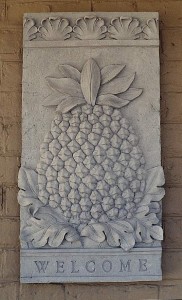 If you’ve been in any long standing classic garden or visited places such as Versailles in France, they have very old concrete sculptures, and you’ll realize that these pieces are too large or numerous to be brought indoors each winter. Also, the longer they live in a garden the more beautiful they become. Moss and lichen begin to grow within crevices highlighting the detail in each sculpture. On this episode of The Garden Gate I provide some tips on what to look for when purchasing concrete pieces for your garden so your art will last for many years.
If you’ve been in any long standing classic garden or visited places such as Versailles in France, they have very old concrete sculptures, and you’ll realize that these pieces are too large or numerous to be brought indoors each winter. Also, the longer they live in a garden the more beautiful they become. Moss and lichen begin to grow within crevices highlighting the detail in each sculpture. On this episode of The Garden Gate I provide some tips on what to look for when purchasing concrete pieces for your garden so your art will last for many years.
Garden Gate: Episode 35 – Peterborough Garden Show
CHEX TV Air date: April 4th, 2014 Click here to watch this episode of The Garden Gate. The Peterboroug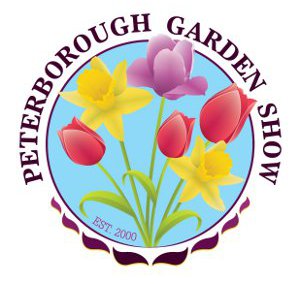 h Garden Show is coming up quickly! ?My guest this episode is Rachel Burrows from the Peterborough Horticultural Society. Rachel is also the chair of The Garden Show. ?She’ll share information on what’s new for this show. New exhibitors, new speakers and new demos. She’ll also offer some tips on the best time to visit the show, parking and where (besides The Avant-Garden Shop) to buy your advance tickets. Please visit their website for full information.
h Garden Show is coming up quickly! ?My guest this episode is Rachel Burrows from the Peterborough Horticultural Society. Rachel is also the chair of The Garden Show. ?She’ll share information on what’s new for this show. New exhibitors, new speakers and new demos. She’ll also offer some tips on the best time to visit the show, parking and where (besides The Avant-Garden Shop) to buy your advance tickets. Please visit their website for full information.
Garden Gate: Episode 31 – Bats and white nose syndrome
Chex TV air date: Feb. 7th, 2014
Click here to watch this episode of the Garden Gate.
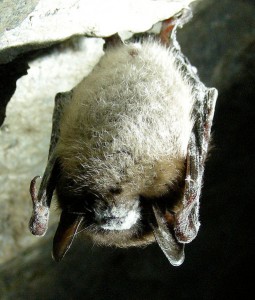 Not everyone is a fan of bats. ?But bats eat 1000’s of mosquitoes everyday and should be encouraged in our gardens and yards. ?You can put up bats houses to attract them. We carry a few styles made locally by Animal House Creations.?
Not everyone is a fan of bats. ?But bats eat 1000’s of mosquitoes everyday and should be encouraged in our gardens and yards. ?You can put up bats houses to attract them. We carry a few styles made locally by Animal House Creations.?
Bats are on a steady decline all across the country because of a fungus called?White nose syndrome.
A local naturalist will be our guest this week. Drew Monkman, will tell us more about this terrible disease and how it is affecting our bats.
Garden Gate Episode 20 – Wasp traps and deterrents
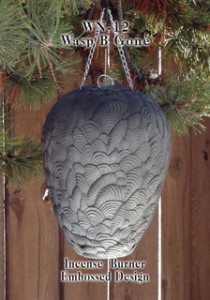 CHEX TV air date: Fri. Sept. 6th, 2013
CHEX TV air date: Fri. Sept. 6th, 2013
Click here to view this episode of ?The Garden Gate.
Wasps have been extra aggressive this year mostly due to lack of rain. Normally we get people into the shop looking for wasp traps and deterrents in August, but this year the requests began in June already!
We have a variety of options to deal with wasps including fake wasp nests to deter wasps from building new nests. Wasps are very territorial and if they see an existing nest they won’t build another within 200 feet of it.
We also carry wasp traps which attract and trap the wasps?and yellow jackets. These do not attract our beneficial bees! That’s a good thing. ?
Add some sweet liquid such as pop or sugar water to the traps and the wasps get up inside and can’t figure out how to get out eventually getting stuck in the sweet liquid. ?Hang them in a tree or place them on a table 10 to 15 feet away from where you sit outdoors. The trap will draw them away from you. Very effective.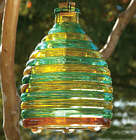 ?
?
Garden Gate: Episode 19 – Butterfly gardens at The Ecology Park
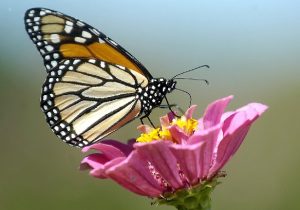 CHEX TV air date: Fri. Aug. 23rd, 2013
CHEX TV air date: Fri. Aug. 23rd, 2013
Click here to view this episode of ?The Garden Gate. ?
We visited The Ecology Park to talk with the manager Marcy Adzich about butterflies and how to build gardens for them and to attract them to your back yard. It was an eye opener! ?
This year we have seen very few butterflies and Kevin (CHEX TV camera man) had a really hard time finding ANY butterflies to film. ?There are a variety of reasons why we haven’t seen as many this year and we talk a little about that.
We can still plant gardens and provide water and nectar for them, in hopes that they will return and their population will increase again. ?
Garden Gate: Episode 18 – Quality tools
CHEX TV air date: Fri. August 9th, 2013
Click here to view this episode of The Garden Gate.
How many times have you gone to a big box store excited to add some new tools to your collection only to be disappointed later when they break, twist or rust!
Joe Cook is an expert when it comes to finding quality tools. He worked in the industry for many years and now uses many tools for his expansive gardens at Blossom Hill Nursery.
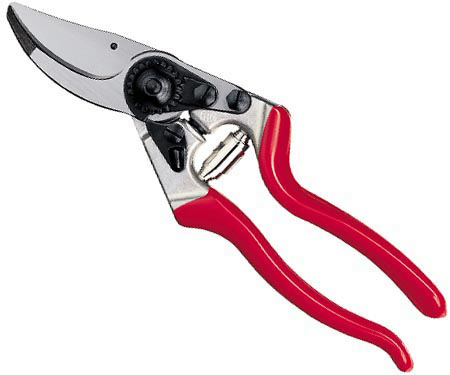 Learn the difference between poor and high quality tools.? At The Avant-Garden Shop we carry Felco pruners, which the experts use because of their durability.
Learn the difference between poor and high quality tools.? At The Avant-Garden Shop we carry Felco pruners, which the experts use because of their durability.
